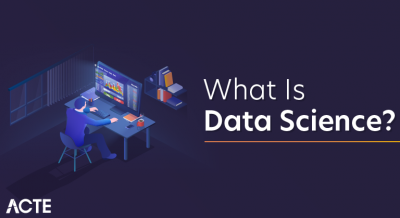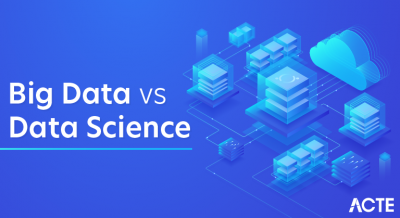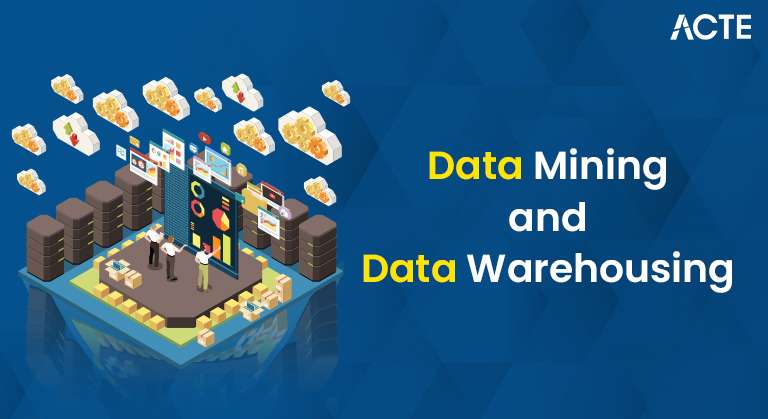
- Introduction to Data Mining and Data Warehousing
- Key Differences Between Data Mining and Data Warehousing
- Purpose and Functionality of a Data Warehouse
- How Data Mining Extracts Insights from Data
- ETL Process in Data Warehousing
- Data Mining Techniques
- Data Warehousing Tools
- Data Mining Tools
- Applications of Data Warehouses in Business Intelligence
- Use Cases of Data Mining in Decision-Making
- Future of Data Mining and Data Warehousing
- When to Use Data Mining vs. Data Warehousing
- Conclusion
Introduction to Data Mining and Data Warehousing
Data mining and warehousing are two essential components of data management and analytics. Data mining involves extracting hidden patterns, trends, and insights from large datasets using statistical algorithms and machine learning techniques. On the other hand, Data Science Course Training collects, stores, and manages data from multiple sources in a centralized repository for reporting and analysis. Both methods are fundamental in business intelligence (BI), helping organizations make data-driven decisions by providing accurate and actionable insights.
Key Differences Between Data Mining and Data Warehousing
While data mining and data warehousing are interrelated, they serve different purposes in the data management ecosystem. Data warehousing focuses on storing and managing large volumes of structured data efficiently, ensuring that the data is clean, consistent, and accessible. It involves the ETL process (Extract, Transform, Load), which extracts data from various sources, transforms it into a standardized format, and loads it into the warehouse for further use. Warehousing supports historical data analysis by consolidating data over time, making it easy to track performance, generate reports, and support business intelligence. On the other hand, Ansible Playbooks Explained Guide focuses on extracting valuable insights and patterns from the data stored in the warehouse. It uses statistical models, machine learning algorithms, and pattern recognition techniques to uncover hidden relationships, trends, and anomalies that may not be apparent through traditional querying methods. Data mining plays a crucial role in predictive analytics by helping organizations anticipate future trends, behaviors, and potential risks.
Gain in-depth knowledge of Data Science by joining this Data Science Online Course now.
Purpose and Functionality of a Data Warehouse
A data warehouse is designed to store large volumes of structured data in a centralized repository, optimizing the accessibility and analysis of data for business intelligence. Its primary functions include data integration, data consistency, and reporting, which provide a foundation for decision-making. Data integration from multiple sources (e.g., CRM, ERP, or financial systems) is combined into a unified format, making it easier to analyze and gain insights from various business functions. Warehouses support historical data storage, enabling organizations to track performance over time, identify trends, and forecast Seamless Cloud Migration Guide . They also facilitate querying and reporting, helping businesses make data-driven decisions based on accurate and timely insights. Additionally, data warehouses are designed to optimize performance by separating transactional and analytical workloads, ensuring efficient processing of complex queries. They support decision support systems (DSS) and online analytical processing (OLAP), enabling detailed data analysis across multiple dimensions. The use of extract, transform, and load (ETL) processes ensures that data is cleaned, validated, and properly formatted before being loaded into the warehouse. Furthermore, data warehouses enable the consolidation of data from different departments or regions, providing a comprehensive view of the organization’s operations. This centralized repository is also critical for compliance, ensuring data is securely stored and meets regulatory requirements for auditing and reporting.
Start your journey in Data Science by enrolling in this Data Science Online Course .
How Data Mining Extracts Insights from Data
Data mining involves applying statistical and machine learning algorithms to identify patterns and trends in data. The process includes data cleaning, model building, and pattern evaluation. For example, data mining can uncover customer purchasing patterns in retail, enabling personalized recommendations. It also supports fraud detection by identifying suspicious transactions and aids in predictive analytics by forecasting future trends. Data Mining Techniques helps organizations enhance efficiency and make informed decisions by extracting actionable insights.
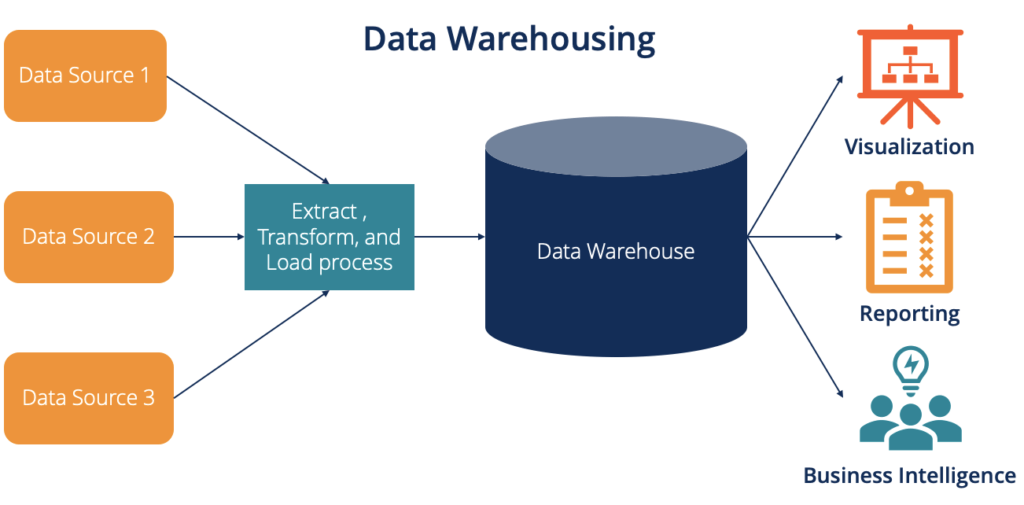
ETL Process in Data Warehousing
The ETL process is essential for preparing and loading data into the repository in data warehousing. The ETL process ensures that Data Science Course Training , consistent, and ready for reporting, making it a critical step in data integration.
- Extract: Data is extracted from multiple sources (databases, applications, etc.).
- Transform: The data is cleaned, standardized, and formatted into a consistent structure.
- Load: The transformed data is loaded into the data warehouse for analysis.
- Classification: Categorizes data into predefined classes (e.g., spam vs. non-spam emails).
- Clustering: Groups data into clusters based on similarities (e.g., customer segmentation).
- Association rules: Identifies relationships between variables (e.g., market basket analysis).
- Snowflake: A cloud-based platform offering scalable storage and fast querying.
- Amazon Redshift: AWS’s fully managed data warehouse for large-scale data analytics.
- Google BigQuery: A serverless data warehouse supporting real-time data analysis.
- RapidMiner: An open-source platform offering data The Importance of Machine Learning for Data Scientists , machine learning, and predictive analytics.
- WEKA: A Java-based tool with algorithms for classification, clustering, and association.
- KNIME: An open-source platform for data analytics, reporting, and data integration.
- AI-powered mining: Automates pattern detection and enhances predictive analytics.
- Real-time data analytics: Supports instant decision-making with streaming data.
- Cloud data warehouses: Offer scalable and flexible storage for big data processing.
- Privacy and security: Enhanced data protection measures to comply with regulations. Both fields will continue to evolve, supporting faster, more intelligent, and more accurate business insights.
- You need to discover hidden patterns and insights.
- You want to perform Data Science vs Data Analytics vs Machine Learning analytics and forecasting.
- You aim to segment customers or detect anomalies.
- Data warehousing is used .
- You need to store large volumes of structured data.
- You require historical data for trend analysis.
- You want to generate reports and dashboards for decision-making.
- While both ETL process serve different purposes, they complement each other in data-driven analytics.
Data Mining Techniques
Data mining uses various techniques to discover patterns:
These techniques help businesses understand customer behavior, detect anomalies, and make data-driven decisions.
Data Warehousing Tools
Several data warehousing tools are widely used:
These tools enable efficient data storage, retrieval, and business intelligence operations.
Data Mining Tools
Popular data mining tools include:
These tools help organizations uncover patterns, visualize trends, and automate analytics.
Aspiring to lead in Data Science? Enroll in ACTE’s Data Science Master Program Training Course and start your path to success!
Applications of Data Warehouses in Business Intelligence
Data warehouses play a vital role in business intelligence (BI) by providing centralized, consistent, and reliable data. They enable organizations to generate real-time reports, dashboards, and visualizations. In retail, warehouses track sales trends, while in finance, they support risk assessment and compliance. Data warehouses also help in customer behavior analysis, market research, and operational performance monitoring, making them essential for strategic decision-making.
Use Cases of Data Mining in Decision-Making
Data mining plays a crucial role in data-driven decision-making across various industries by uncovering valuable patterns and insights from large datasets. In marketing, it predicts customer preferences and personalizes offers to enhance customer engagement. In finance, data mining detects fraudulent activities and assesses credit risks to protect assets and ensure financial stability. In healthcare, it helps identify disease patterns and optimize treatment plans, improving patient outcomes. Retailers use market basket analysis to recommend products, boosting sales and customer satisfaction. Additionally, data mining in supply chain management can predict demand, ensuring efficient inventory management. Role of Citizen Data Scientists in Todays Business application in manufacturing helps detect defects early, improving product quality and reducing costs. These use cases show how data mining enhances accuracy, minimizes risks, and drives strategic decision-making across sectors.
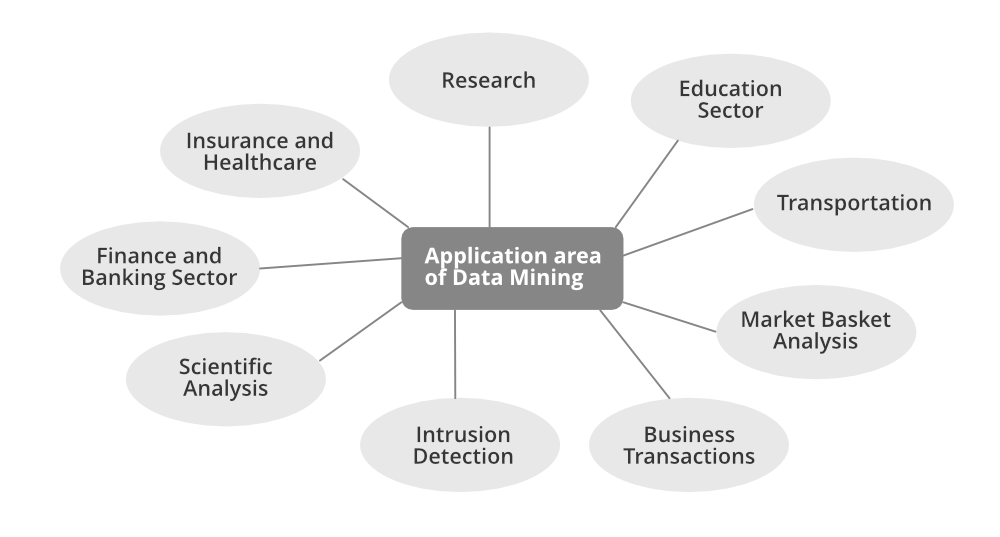
Future of Data Mining and Data Warehousing
AI, machine learning, and cloud technologies will drive the future ofData Mining Techniques and warehousing.
When to Use Data Mining vs. Data Warehousing
Data mining is used when:
Preparing for Data Science interviews? Visit our blog for the best Data Science Interview Questions and Answers!
Conclusion
Data mining and data warehousing are essential components of modern data analytics. While warehousing provides centralized storage for structured data, mining extracts valuable insights to drive Data Science Course Training . With the increasing adoption of cloud platforms, AI, and real-time analytics, both fields will continue to play a vital role in business intelligence and predictive analytics.

